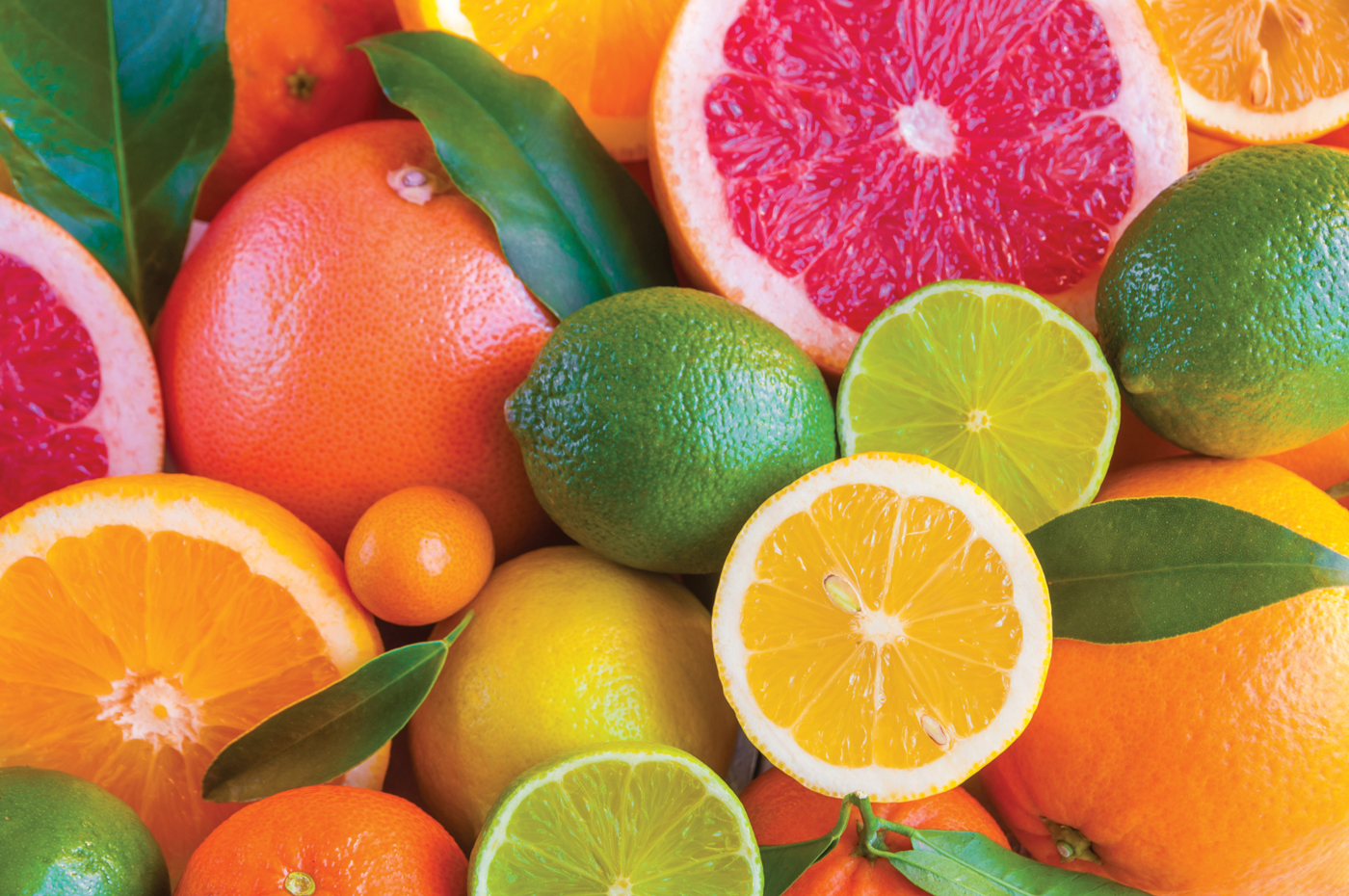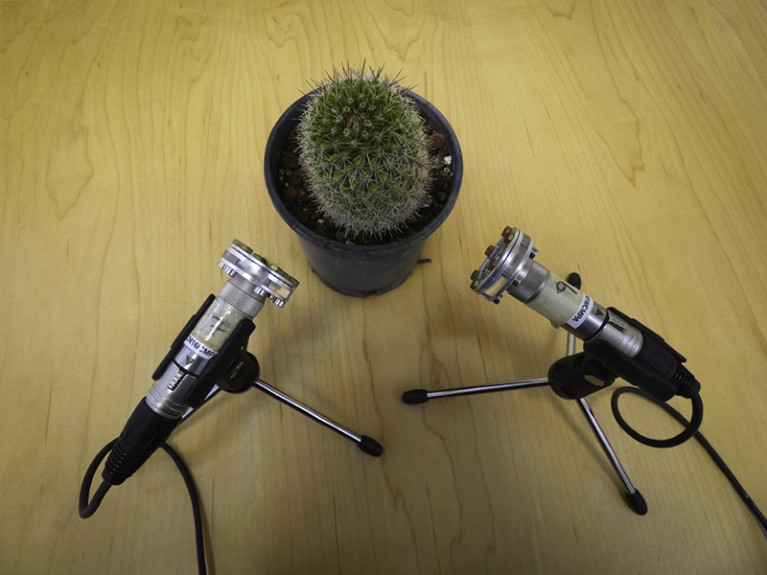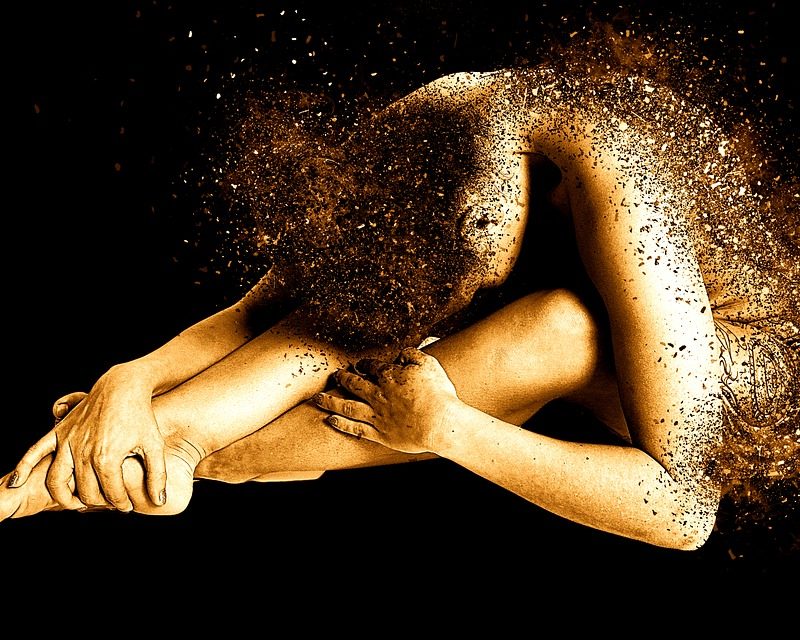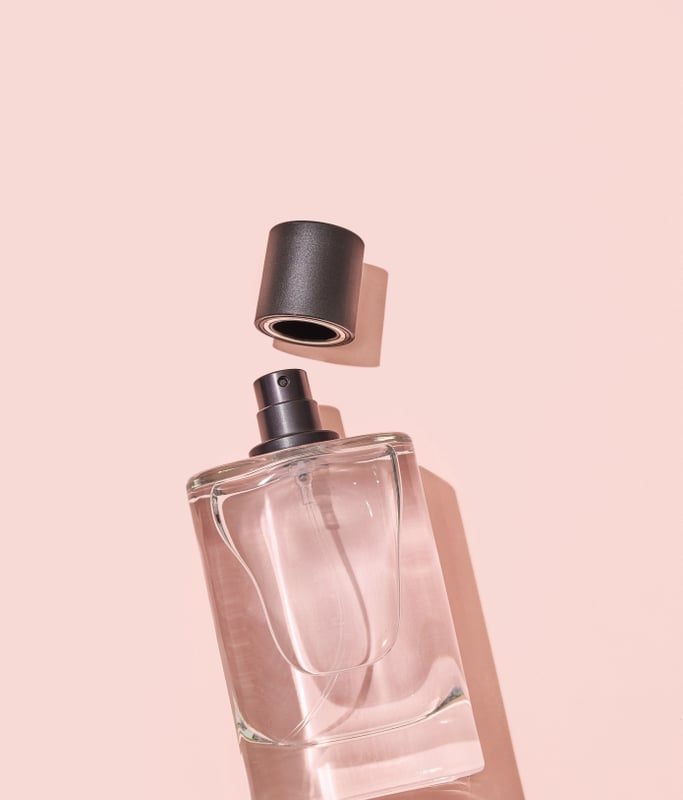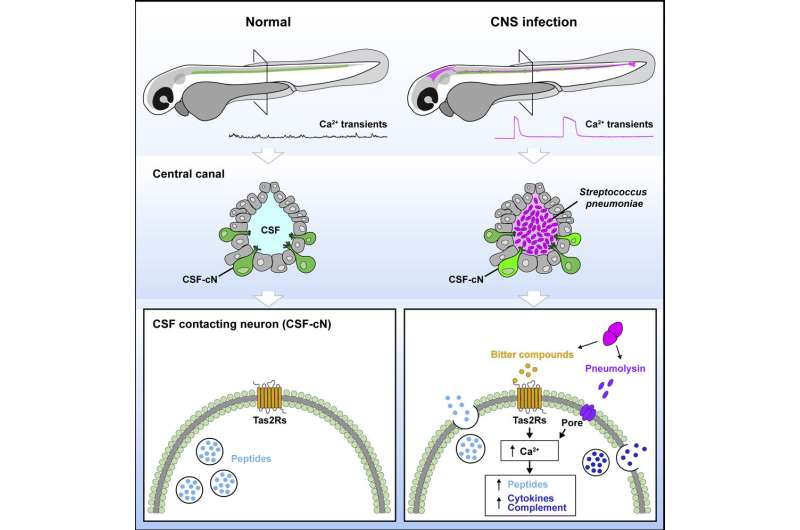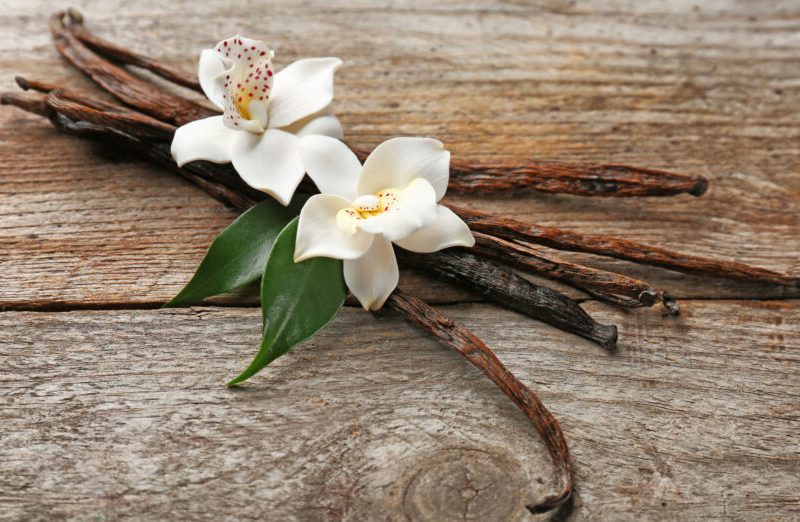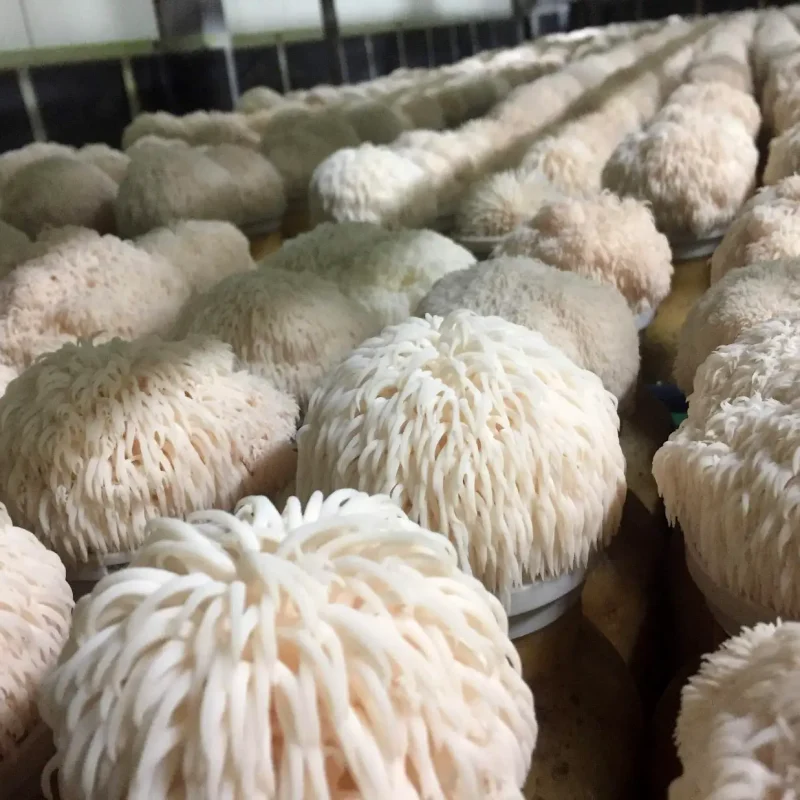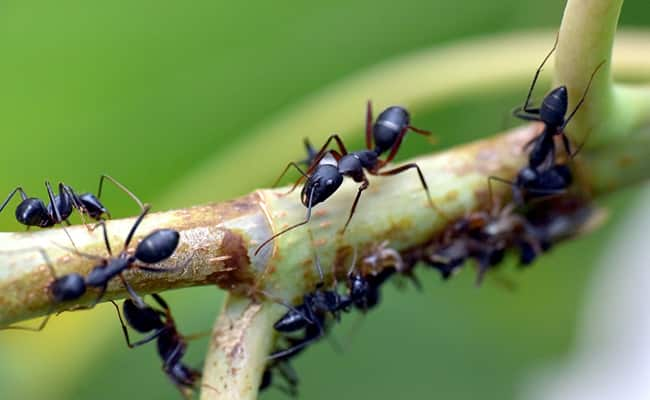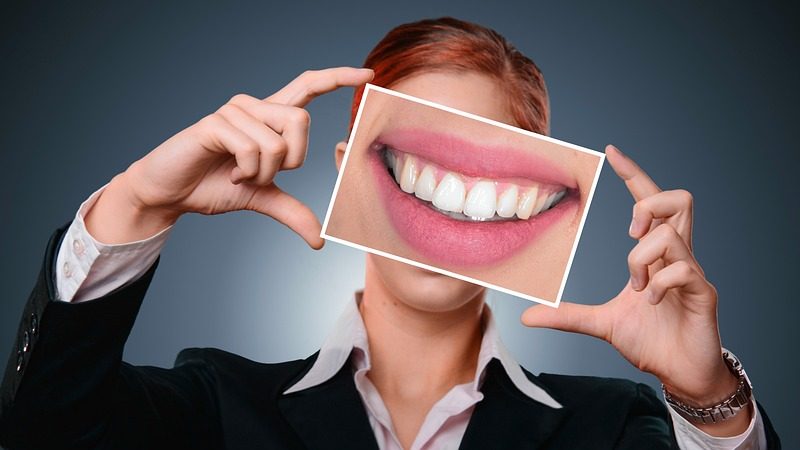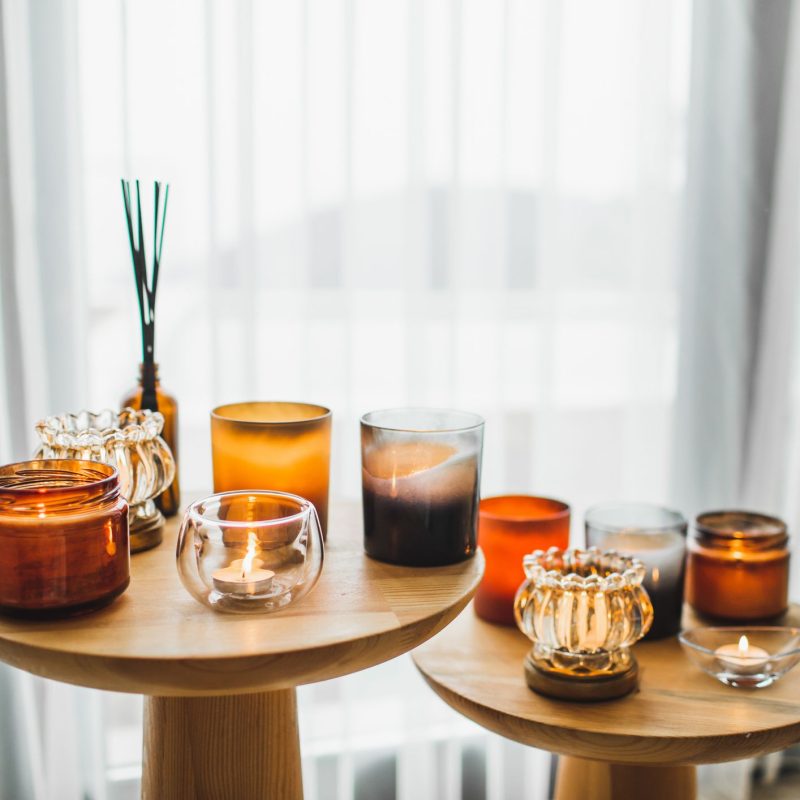There’s no question terpenes are a hot topic among both cannabis and mainstream retailers. How hot? Witness one of the 2018 seasonal drinks introduced by coffee empire Starbucks: the Juniper Latte, a veritable sugar- and spice-frosted, aromatic Christmas tree in a cup. The company described the creation as containing “a hint of juniper and sage, an evergreen aroma, and citrus notes.” It was concocted of “Starbucks signature espresso and steamed milk infused with juniper syrup and capped with velvety foam and a dusting of pine-citrus sugar.”
 Juniper and sage? Evergreen and citrus? Sounds more like a description of a Seattle-grown cannabis strain than a fancy Christmas caffeinated beverage, doesn’t it? It’s certainly a level up in sophistication and subtle taste compared to the wildly popular, seasonal (and sugary) Unicorn Frappuccino or autumn’s signature flavor, the Witches Brew, made with superfood-forward “bat wart” chia seeds. As described, the beverages went well beyond traditional fast-food products by containing elements consumers want to experience: pine trees, coffee, and spices all possess intangible qualities that elicit emotional and physical reactions when smelled. An increasing recognition of such experiences as an integral part of overall health is prompting consumers to sniff out the scent of wellness.
Juniper and sage? Evergreen and citrus? Sounds more like a description of a Seattle-grown cannabis strain than a fancy Christmas caffeinated beverage, doesn’t it? It’s certainly a level up in sophistication and subtle taste compared to the wildly popular, seasonal (and sugary) Unicorn Frappuccino or autumn’s signature flavor, the Witches Brew, made with superfood-forward “bat wart” chia seeds. As described, the beverages went well beyond traditional fast-food products by containing elements consumers want to experience: pine trees, coffee, and spices all possess intangible qualities that elicit emotional and physical reactions when smelled. An increasing recognition of such experiences as an integral part of overall health is prompting consumers to sniff out the scent of wellness.
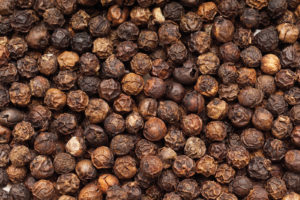 That olfactory stimulation would play a critical role in wellbeing may seem to some like patchouli-packing hippy talk, right up there with crystal-enhanced drinking water or vibrational sound baths. However, a wealth of scientific data indicates scent can have beneficial mental and physical effects—and that’s where terpenes come in.
That olfactory stimulation would play a critical role in wellbeing may seem to some like patchouli-packing hippy talk, right up there with crystal-enhanced drinking water or vibrational sound baths. However, a wealth of scientific data indicates scent can have beneficial mental and physical effects—and that’s where terpenes come in.
Terpenes, which are found in every plant, are hydrocarbon-based compounds typically associated with scent but which have many industrial uses. In fact, the word “terpenes” derives from the same Greek root as the word turpentine—the strongly scented distilled extract of gum and pine trees used as a solvent and in paint and lacquer. There are 20,000 known terpenes, 200 of which are said to be from cannabis varieties. In the context of cannabis, many consumers judge the quality of dried flower with a good whiff. Whether the aroma hints at citrus, pine, or skunk, the scent-sensitive customer uses terpenes to sense an experience.
“OLFACTION, THE SENSE OF SMELL, IS THE ONLY SENSE THAT BYPASSES THE THALAMUS AND CONNECTS DIRECTLY TO THE FOREBRAIN.”
—DR. J. PRESTON CAMPBELL, CHIEF SCIENTIFIC OFFICER, MONQ
“Olfaction, the sense of smell, is the only sense that bypasses the thalamus and connects directly to the forebrain,” explained Dr. J. Preston Campbell, chief scientific officer at aromatherapy product manufacturer MONQ. “No filtering—just direct connection between chemical stimuli and your emotions. It happens quickly, which is why you can feel nauseated or start crying from some specific odor context before your conscious brain even knows why.”
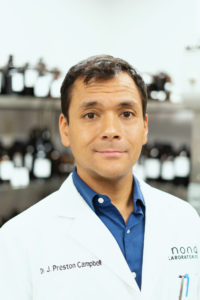 Defining the ‘qualia’ of things
Defining the ‘qualia’ of things
MONQ represents an application of modern technology to the ancient traditions of aromatherapy and essential oil inhalation. The MONQ “personal aromatherapy diffuser” (basically, a reusable vape battery), utilizes disposable cartridges filled with proprietary, mood-enhancing essential oil blends. MONQ encourages consumers not to inhale completely, but to draw off the diffuser, then breathe out through the nose. This allows botanical essences to be introduced directly to the user’s palate and olfactory receptors, followed by rapid delivery of active compounds to the bloodstream and forebrain.
For instance, MONQ’s Happy blend contains oils of fennel, thyme, vanilla, caraway, clary sage, lavender, green mandarin, marjoram, parsley seed, and petit grain. Intended to evoke “joy and kindness,” the blend’s benefits go beyond freshening the air. Fennel long has been used as a natural remedy for upset stomach. Thyme is said to be calming, improving blood circulation and mental focus. Vanilla has been used to reduce anxiety, invigorate, and even as an aphrodisiac.
“There is a great deal of evidence to support the notion that human physiology functions optimally with the addition of terpenes,” Preston Campbell said.
At one point, MONQ’s product development team wanted to deliver “forest therapy” to consumers. Called Shinrin-Yoku by Japanese adherents, forest therapy—or “forest bathing”—is the practice of utilizing woodland walks as an immersive experience to improve health and happiness and relieve stress.
“Think about it from an evolutionary perspective,” Preston Campbell said. “Innumerable birds, insects, and mammals spent millions of years in forest environments and reached a point of coevolution in which animal survival is controlled by the plants’ secretion of volatile organic compounds into the air, like pheromones and scent molecules.
“These animals require scents from plants to live, feed, and mate. Humans are animals too,” he continued. “Why wouldn’t we share some of the same relationships with plants? There is strong evidence from forest therapy studies that this idea of optimized physiology can be obtained through immersion in forest environments, and a great deal of the benefits arise from the scent molecules you inhale.”

But if birds do it and bees do it, why do educated humans have such a hard time putting a finger on the molecule-sized components that help them feel better? Why do they put more faith in prescriptions than plant medicine?
Preston Campbell, as well as MONQ founder and orthopedic surgeon Eric Fishman, M.D., are traditionally trained medical doctors who emphasize aromatherapy treatments aren’t meant to take the place of conventional medicine for health conditions requiring treatment by a physician. But both Preston Campbell and Fishman also recognize traditional medicine overlooks some elements of good health. Those elements respond to stimuli with subtle and individual reactions that are easy to miss and often difficult to quantify.
Essential oil blends (and other aromatherapy products) attempt to trigger good health by using terpenes to enhance positive feelings, physical relief, or improved mood. At MONQ, those effects are measured in units called “qualia.” Quale is the singular form.
What’s a quale, you ask? Merriam-Webster Dictionary defines a quale as “a property as it is experienced as distinct from any source it might have in a physical object.”
Trying to explain the sophisticated synergy between the brain, body, senses, and stimuli—in this case, with the sense of smell—is complicated…as complicated as trying to explain why a lemon is lemony, and then why that lemon scent, and the flood of terpenes into your brain, helps you feel refreshed and awake.
In the cannabis world, qualia are essential to the “entourage effect” that enhances the experience of full-spectrum cannabis applications, including blends of cannabinoids and terpenes.
Fortunately, your nose knows good qualia when it smells them.
Ancient history, future markets
Many cultures have used essential oils therapeutically and ritually. The ancient Egyptians, in fact, documented the essential oils they used in the process of mummification. China, India, and Greece employed essential oil therapies in antiquity. In biblical history, two of the three kings brought the infant Jesus aromatic gifts of frankincense and myrrh, illustrating the extreme value of pungent substances in the ancient world, equal to—and sometimes more valuable than—gold.
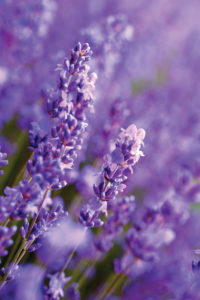 Although largely unknown in the United States until the 1970s, the term “aromatherapy” was coined in 1937 by French chemist René-Maurice Gattefossé; his father Louis had founded a cosmetics company in France in 1880. The son, who suffered burns in 1910, discovered essential oil of lavender helped heal his scars. Linalool—a terpene found in lavender and cannabis and said to alleviate both pain and anxiety—likely played a role in Gattefossé’s reported recovery. Eventually, he authored the first book on medicinal uses of essential oils: Aromathérapie; les huiles essentielles hormones végétales.
Although largely unknown in the United States until the 1970s, the term “aromatherapy” was coined in 1937 by French chemist René-Maurice Gattefossé; his father Louis had founded a cosmetics company in France in 1880. The son, who suffered burns in 1910, discovered essential oil of lavender helped heal his scars. Linalool—a terpene found in lavender and cannabis and said to alleviate both pain and anxiety—likely played a role in Gattefossé’s reported recovery. Eventually, he authored the first book on medicinal uses of essential oils: Aromathérapie; les huiles essentielles hormones végétales.
Both the family company and subsequent nonprofit Gattefossé Foundation still exist, with the foundation providing education and advocacy for essential oil use in hospitals and healthcare.
Of course, there’s more than one way to experience terpenes. Scent’s twin sister is flavor, typically encountered in tandem with scent in food and beverages. In the case of beer, hops—a varietal cousin to cannabis—adds flavor and character. Other spirits that make specific use of botanical essences include gin, which is flavored with juniper, along with other botanicals; herbal blend Jägermeister; and absinthe, which incorporates anise and wormwood.
Terpenes are nothing new to craft beer brewers, but THC and other cannabis-derived compounds could be a game-changer. The most recent manifestation of craft beer has no alcohol content at all. Instead, the brew is infused with THC from cannabis. While terpenes aren’t as essential to the new angle on ales, revising beer’s molecular recipe is an expression of consumer interest in cannabis and new ways to experience adult beverages.
The trend is being watched closely by legacy alcohol brands. Multinational adult beverage distributor Constellation Brands was the first to place a billion-dollar bet on the industry by way of a product-development deal with Canadian cannabis producer Canopy Growth. In December 2018, AB InBev—the world’s largest brewer and parent company to Budweiser—partnered with Canadian company Tilray to develop cannabis-infused adult beverages.
California-based infused adult beverage company Cannabiniers was the first to develop craft brews with the alcohol content removed and subsequently replaced with an infusion of THC from cannabis. The company launched the craft brews, called “cannabier,” in August 2018 under the Two Roots Brewing Co. brand, concurrently with its Just Society line of THC-infused iced teas and coffees.
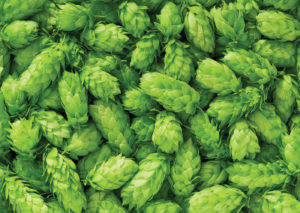 Cannabiniers Director of Product Development Kevin Love explained that while cannabis terpenes aren’t necessarily desirable in consumable products due to their typically strong flavors, cannabis and hops blend well together because they are from the same plant family. “We like the fact that [cannabis and hops are] complementary taste elements, right? And the compounds actually allow for these two very distinct flavonoid-type profiles to coexist with each other,” said Love. “So, there is a unique element…the crossover characteristics that make cannabis-infused de-alcoline beer such a perfect match.”
Cannabiniers Director of Product Development Kevin Love explained that while cannabis terpenes aren’t necessarily desirable in consumable products due to their typically strong flavors, cannabis and hops blend well together because they are from the same plant family. “We like the fact that [cannabis and hops are] complementary taste elements, right? And the compounds actually allow for these two very distinct flavonoid-type profiles to coexist with each other,” said Love. “So, there is a unique element…the crossover characteristics that make cannabis-infused de-alcoline beer such a perfect match.”
Love pointed out beer and other water-based beverages are optimal for sublingual delivery of active cannabis compounds because, unlike fat-based edible products, consumers don’t have to wait for digestion to occur for the THC or other active ingredients to be absorbed into the bloodstream. He said Two Roots’ brewing technology breaks down active compounds to nearly nano-scale for rapid intake. This results in a quicker onset of effects, mimicking the reaction time of an alcoholic drink.
“We wanted to ensure when the consumer is drinking our product, that as they’re consuming it, they’re actually experiencing the same consumption onset that they would with traditional alcohol products. And that’s a way we can regulate, ensuring that we have strong efficacy,” Love said. “Our dosing is accurate, our onset and consumption times are accurate, and the experience as you’re consuming is [similar to] that of alcohol, because we all know our tolerance levels of alcohol.
“That’s the thing about this product: It’s the same exact process that you’re consuming, you’re inching up, and you get to a point where you know exactly how much to consume to be where you need to be,” he added. “And that’s your benchmark. So, it’s important to have the consumer be able to interact with the product on the spot.”
Love predicted consumers’ ability to experience THC beverages in a social setting—just like alcohol— will tap a whole new market for adult beverages. Recent moves by market-leading, multinational alcohol producers and distributors to merge with, invest in, or acquire Canadian cannabis companies certainly seem to support the prediction.

Scientifically speaking
Cannabis edibles producer Kushy Punch infuses its award-winning gummies and vape blends with full-spectrum cannabis extract that includes cannabinoids and terpenes, as well as other natural, organic ingredients. Carolina Vasquez, chief scientist for the company, has been studying terpenes and other plant compounds since her teenage years, when she discovered a career interest in biochemistry and organic chemistry. Since then, she has earned a bachelor’s degree in chemistry and pharmacobiology from the University of Guadalajara and a Ph.D. in chemistry from the University of California.
Before joining Kushy Punch, Vasquez founded consultancy KitChem, which helped companies research and develop cannabis edibles, supplements, food, and beverages. She also served as head of research for an American beverage consulting firm.

“Before entering the cannabis industry, I was very aware of the benefits of cannabinoids and terpenes,” she said. “Herbs and plants rich in terpenes have been used for millennia with well-reported effects. I first learned of the existence of terpenes almost two decades ago, in an organic chemistry class in high school.
“The endocannabinoid system was not a mystery, either,” she continued. “This system regulates mood, inflammation, pain, immunity, appetite, and sleep, among many other physiological responses. Endocannabinoid receptors were discovered in 1988; they are the most abundant neurotransmitter receptor in the brain and have been studied ever since.”
Vasquez’s early experience with cannabinoids and terpenes illustrates strides made by research scientists like legendary Israeli cannabis researcher and organic chemist Raphael Mechoulam, who isolated the cannabinoid THC in 1965 and is credited with discovering the endocannabinoid system. Despite U.S. cannabis prohibition, cannabis studies and trials in countries like Israel have steadily increased since Mechoulam’s groundbreaking research, contributing to public acceptance of medical cannabis.
Instead of fast-acting products like THC-infused beer, Kushy Punch is committed to producing a more classic edibles experience, the result of digesting cannabinoids. Although the effects can take somewhat longer to manifest, traditional edibles typically produce stronger effects than inhaling or ingesting water-soluble infused products or applying topicals.
“In the case of [fat-free] beverages, they commonly use hydrosoluble [water-soluble] cannabinoids,” Vasquez explained. “These molecules are metabolized differently and produce a wholly different and short-lasting effect compared with the standard liposoluble [soluble in oil] cannabinoid. That is not really aligned with what our audience is looking for.”
Vast experience with consumer food and beverage brands puts Vasquez in a position to speculate about consumable cannabis trends and how infused products will develop for global markets.
“This is a very interesting moment in food science,” she said. “I see flavor companies developing cannabis flavors these days. Chefs and food scientists are using cannabinoids—and especially CBD—in foods like desserts, snacks, or main dishes. Hydrosoluble cannabinoids are trending, too.
“I’ve also seen cannabis bees that produce 1-percent THC honey,” she said.

Talking terpenes
“True Terpenes is lucky enough to straddle a variety of markets, which in turn gives us access to an incredible variety of customers,” said Vice President of California Operations Audra Horridge. “Terpenes are found in the food we eat, in things like black pepper [beta-caryophyllene], the beer we drink [hops/myrcene] and, of course, cannabis.”
The company “specializes in the sourcing and custom formulation of pure, potent, and always-analyzed botanical terpenes.” While terpenes are used in a wide variety of industrial and consumer applications, Horridge said True Terpenes focuses on cannabis oil producers who want to add terpenes back into their extract blends to improve flavor or increase therapeutic effects. Extraction processes may strip away natural terpenes in cannabis extracts, which sometimes are re-added. True Terpenes also supplies manufacturers with terpenes for use in food and beverage products.
“We work with brewers like Coalition Brewing in Portland,” Horridge said. “They’re currently utilizing our botanically sourced [cannabis] strain profiles to enhance the taste of beers.”
According to David Heldreth, manager of marketing content for the company, “Terpenes, as components of essential oils, foods, and other products, have been used by humans since the dawn of time. However, the rise of the cannabis industry has put a new light on these compounds. Terpenes are tied to the intrinsic working of cannabis via the entourage effect. As cannabis education and use has increased, so has that of terpenes. As the public learns about cannabis, they’re basically getting a crash course in terpenes on the side. When people learn about the benefits of terpenes, it opens a whole new market to them.”
For example, he continued, “Hops contains myrcene. Many people are aware of the use of lavender essential oil in a diffuser or lavender tea to help unwind. Lavender lotion is known for its soothing effect when used topically. That effect is essentially the action of a variety of terpenes, including the terpene linalool in the lavender. Similarly, indica strains of cannabis contain linalool, among many other terpenes that provide that same effect to help you unwind. From topicals to tea to beer, there’s an endless variety of uses.”
Horridge believes crediting terpene trends for at least part of rising consumer interest in cannabis is hitting the issue right on the nose, so to speak. “The use of essential oils has boomed over the past few years right alongside cannabis,” she said. “As essential oil or cannabis enthusiasts learn about the terpenes in their products, it helps with normalization of the cannabis plant. It helps demonstrate that many of the extractions of cannabis are just essential oils themselves.”

